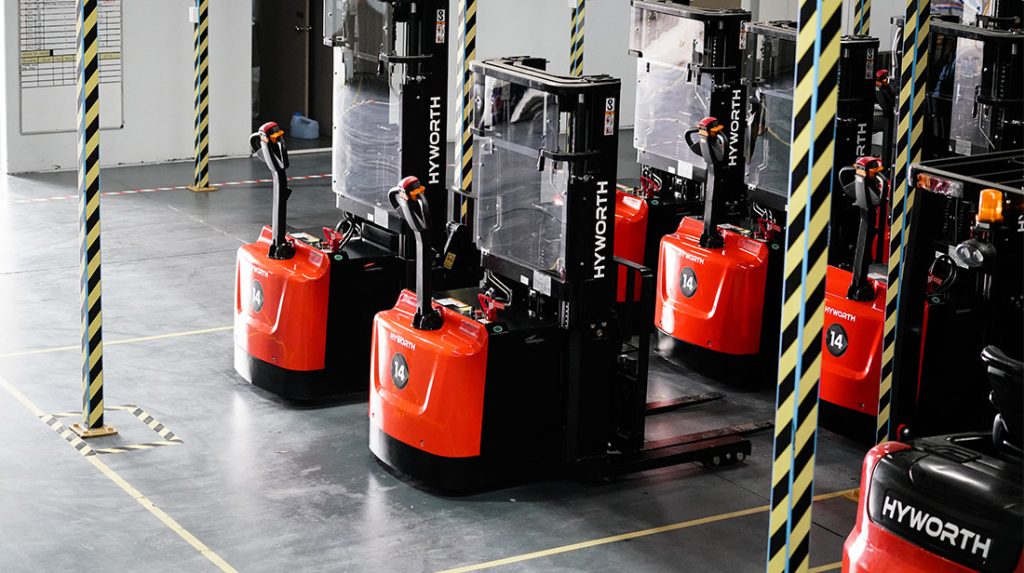
Forklifts are essential in warehouses, factories, and other places where goods need to be moved around. These machines help carry heavy items easily and quickly, making sure businesses run smoothly. At Hyworth Forklifts, we focus on providing the right kind of forklift for different tasks. We have five main forklift types: Walk Behind Forklifts, Pallet Movers, Electric Counterbalance Forklifts, Reach Trucks, and LPG/Gas Forklifts.
These machines vary in size, power, and how they move around. For example, some are great for indoor use because they don’t produce emissions, while others are better suited for outdoor tasks with heavier loads. Understanding these differences is crucial when choosing the right forklift for your work, ensuring you get the job done efficiently and safely.
This guide will help you understand these five forklift types better. We’ll talk about what makes each one special and how to decide which forklift is the best for your needs. Whether you’re buying a forklift for the first time or looking to add to your fleet, we want to make sure you have all the information you need to make a good choice. Let’s get started on finding the right forklift for you.
Walk behind forklifts
Maximising efficiency in tight spaces
Walk Behind Forklifts, also known as pedestrian forklifts, are designed to operate in areas where space is at a premium. These forklift types are perfect for manoeuvring in narrow aisles and tight environments, offering a high level of control and flexibility. Their compact size and excellent manoeuvrability make them ideal for loading and unloading goods in confined spaces, such as small warehouses, retail spaces, and other areas where traditional forklifts can’t easily go.
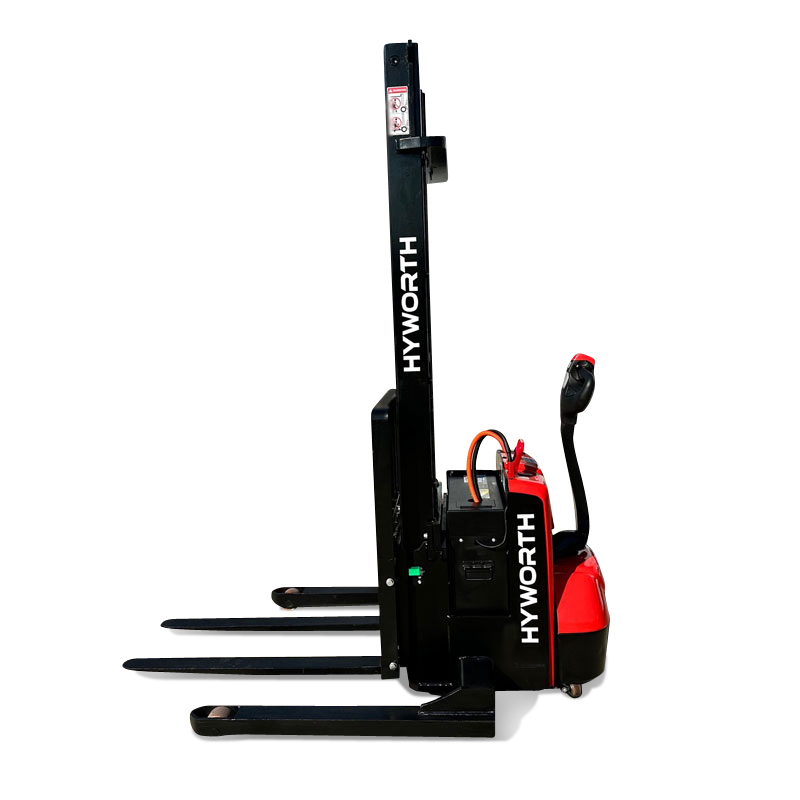
One of the main advantages of Walk Behind Forklifts is their ease of use. Operators can guide them with precision, making it simpler to navigate through tight spots without the risk of damaging goods or shelving. These machines are also highly efficient, with battery power that supports a full day’s work without the need for frequent recharges.
Ideal use cases for Walk Behind Forklifts include moving pallets in cramped warehouses, transporting goods in narrow store aisles, and handling materials in tight storage facilities. They are especially useful for businesses that require frequent loading and unloading of goods but do not have the space for larger forklifts.
By choosing Walk Behind Forklifts, businesses can enhance their operations in compact spaces, ensuring that even the most confined areas can be utilised effectively. These forklifts not only improve productivity but also contribute to a safer work environment by reducing the likelihood of accidents in narrow passages.
Pallet movers
Streamlining warehouse operations
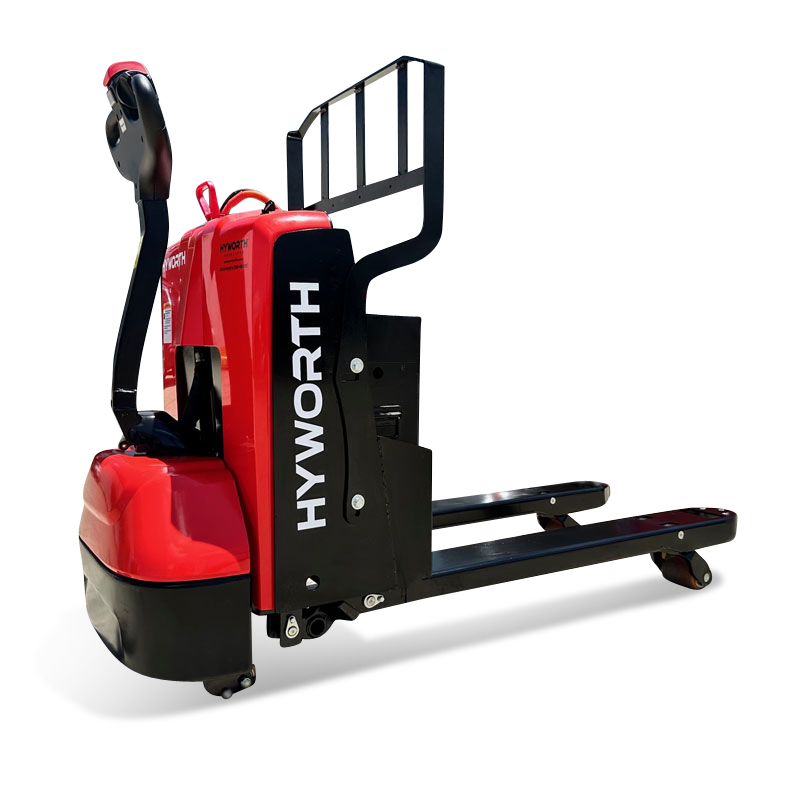
Pallet Movers are essential in the efficient operation of warehouses and distribution centres. These forklift types are specifically designed to lift and transport pallets over short distances quickly and effortlessly. Their compact design and ease of operation make them a go-to choice for moving goods within the confines of a warehouse, where space can often be limited.
The key to a Pallet Mover’s efficiency lies in its simplicity and speed. Operators can easily manoeuvre through aisles, dock areas, and loading bays, making them perfect for a variety of tasks, from loading trucks to moving stock around the warehouse floor. Their straightforward controls allow for quick pick-up and go operation, which is essential in high-demand environments where time is of the essence.
Pallet Movers are a staple in warehouse settings for several reasons. Firstly, they significantly reduce manual handling of goods, minimising the risk of injury and improving workplace safety. Additionally, their ability to quickly move heavy loads increases productivity, allowing businesses to meet their logistical demands more effectively.
Ideal for any setting that requires the frequent moving of palletised goods, Pallet Movers are a versatile and invaluable tool in the logistics and warehousing industry. Their contribution to streamlining operations makes them a must-have in any facility looking to enhance efficiency and productivity.
Electric counterbalance forklifts
Balancing power and sustainability
Electric Counterbalance Forklifts are at the forefront of combining operational efficiency with environmental sustainability. These forklift types stand out for their ability to balance heavy loads using a counterweight, allowing them to move goods safely and effectively. What sets them apart is their use of electric power, significantly reducing emissions and making them ideal for indoor use and environments where air quality is a concern.
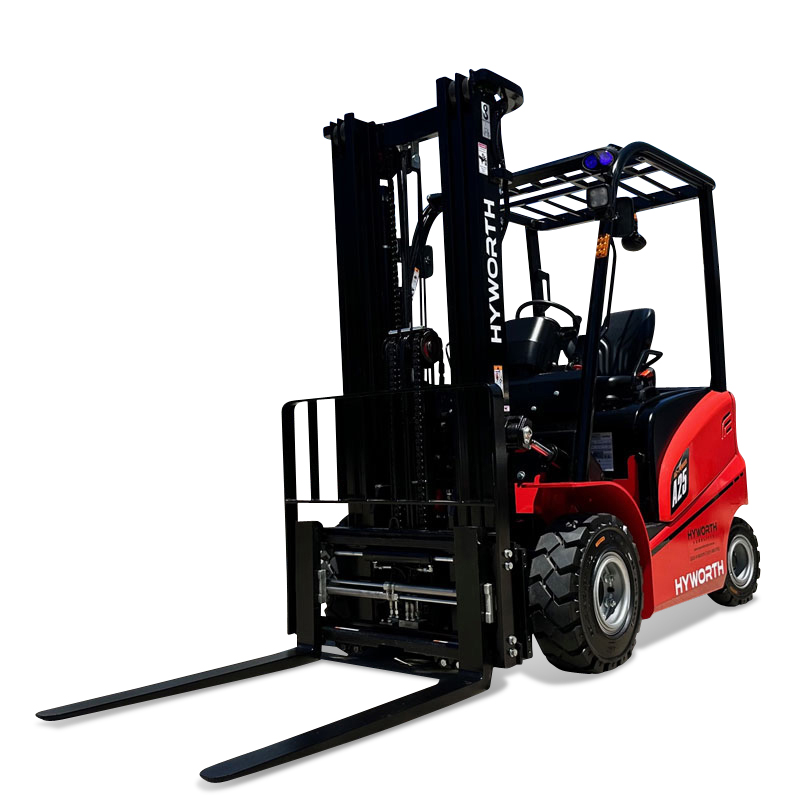
The Electric Counterbalance Forklifts come in various configurations, including three-wheel and four-wheel models, to cater to different workplace needs. Three-wheel variants are known for their exceptional manoeuvrability, able to navigate tight spaces with ease, making them perfect for warehouses with narrow aisles. On the other hand, four-wheel models provide enhanced stability and are better suited for moving heavier loads over more even surfaces.
The environmental benefits of Electric Counterbalance Forklifts cannot be overstated. By operating on electricity, they eliminate the pollutants associated with diesel or gas-powered engines, contributing to a cleaner, healthier workspace. Moreover, advancements in battery technology have led to longer run times and shorter charging periods, ensuring they can keep up with the demands of busy operations without constant downtime for recharging.
Versatile, eco-friendly, and powerful, Electric Counterbalance Forklifts are an excellent choice for businesses looking to increase productivity while minimising their environmental footprint. Whether you’re navigating narrow aisles or lifting heavy loads, there’s an electric counterbalance model designed to meet your needs, proving that efficiency and sustainability can indeed go hand in hand.
Reach trucks
Maximising warehouse space
Reach Trucks are designed to do exactly what their name suggests: reach heights other forklift types can’t, making them indispensable in warehouses with high shelving. Their unique design includes a mast that extends upwards and outwards, allowing them to lift loads to impressive heights while operating in narrow aisles. This capability makes Reach Trucks a key player in maximising storage space and efficiency in warehouse settings.

The standout feature of Reach Trucks is their lift capability. They are engineered to reach high shelves safely and efficiently, ensuring that vertical space in warehouses is utilised to its full potential. This is especially useful in facilities where space is at a premium, and expanding outwards isn’t an option.
Moreover, Reach Trucks are designed with narrow aisles in mind. Their compact size, combined with a tight turning radius, allows for excellent manoeuvrability, making it easier to navigate through tight spaces without compromising on lifting power. This agility is complemented by stabilising features that ensure safety when handling loads at height.
For businesses looking to optimise their warehouse operations, Reach Trucks offer a solution that balances the need for high-reach capabilities with the practicalities of working in confined spaces. By leveraging the unique design and capabilities of Reach Trucks, companies can enhance their storage efficiency and operational productivity, ensuring that every inch of warehouse space is put to good use.
LPG/Gas forklifts
Versatility and power
LPG/Gas Forklifts offer a powerful solution for a wide range of lifting tasks, combining the strength needed for heavy loads with the flexibility to work both indoors and outdoors. These forklift types are valued for their robust performance, providing a reliable lifting capacity that can handle a variety of materials with ease.
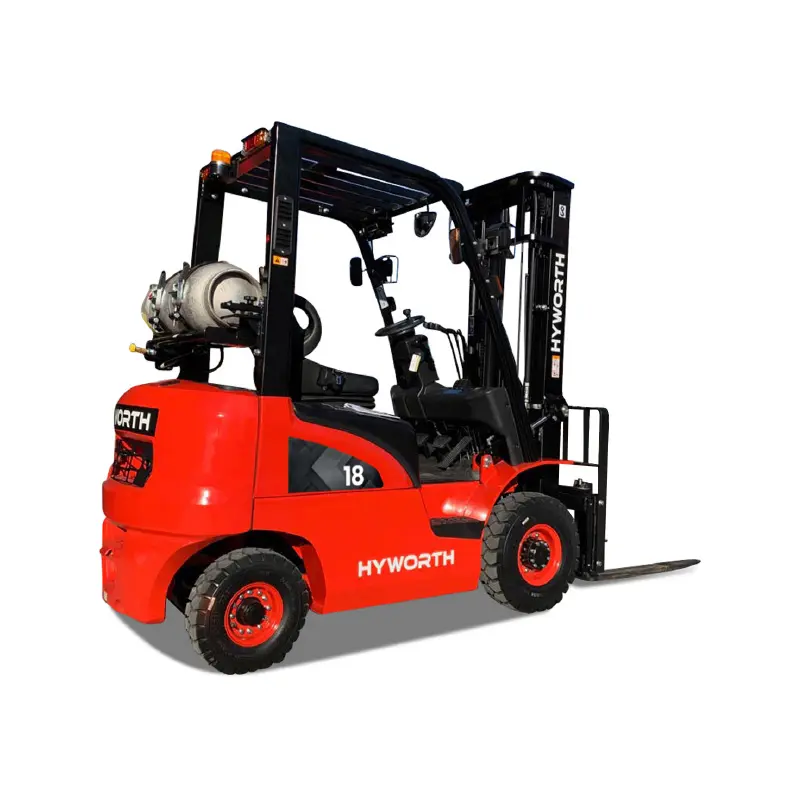
One of the key benefits of LPG/Gas Forklifts is their versatility. Unlike electric forklifts, which are primarily used indoors, LPG/Gas models excel in both indoor and outdoor environments. This makes them ideal for businesses that operate in warehouses but also need the ability to move goods in open spaces, such as outdoor storage areas.
Another significant advantage is their consistent power output. LPG/Gas Forklifts can run at full capacity for longer periods compared to their electric counterparts, without the need for recharging. This ensures that operations can continue without interruption, enhancing productivity. The quick refueling process further minimises downtime, keeping your business moving.
For operations looking for a balance between power, flexibility, and operational efficiency, LPG/Gas Forklifts are an excellent choice. They not only adapt to various working conditions but also maintain high performance levels, ensuring your material handling needs are met with reliability and strength.
Forklift types: Decision-making tips
Choosing the right forklift from the various forklift types available is crucial for enhancing your operational efficiency and safety. Here’s a step-by-step guide to help you make an informed decision:
Determine the capacity
Start by identifying the maximum weight your forklift will need to lift. Each forklift type has a different lifting capacity, so it’s essential to choose one that can handle your heaviest load comfortably.
Calculate the job site’s stability
Consider the environment where the forklift will be used. Indoor environments, like warehouses, often require electric or LPG/gas forklifts that emit fewer pollutants. Outdoor usage, especially on uneven terrain, might necessitate a more robust forklift type, such as those with pneumatic tires.
Measure the space’s height
The height of your storage spaces will dictate the lift height you need. Reach Trucks are ideal for high shelving in tight aisles, while standard Electric Counterbalance Forklifts or LPG/Gas Forklifts might suffice for lower heights.
Select the correct fuel type
Electric forklifts are suitable for indoor use due to their zero emissions, whereas LPG/gas forklifts offer flexibility of indoor and outdoor use. The choice here will largely depend on your operational environment and the need for sustainability versus versatility.
Analyse the terrain
Evaluate the surfaces the forklift will operate on. Smooth indoor floors are ideal for electric and three-wheel counterbalance forklifts, while rough, uneven outdoor surfaces may require the durability and power of LPG/gas forklifts.
Space constraints
For operations with limited space, compact forklift types like Walk Behind Forklifts and Pallet Movers are ideal. They offer excellent manoeuvrability in tight spaces without sacrificing lifting capacity.
By following these steps and considering the specific needs of your operation, including load size, environment, height requirements, fuel type, and space constraints, you can select the most appropriate forklift type. This ensures that your investment not only boosts productivity but also aligns with your operational goals and safety standards.
Conclusion
Choosing the right forklift type for your operation is crucial for ensuring efficiency, safety, and productivity. With various forklift types available, including Walk Behind Forklifts, Pallet Movers, Electric Counterbalance Forklifts, Reach Trucks, and LPG/Gas Forklifts, it’s essential to consider factors such as load capacity, working environment, space constraints, and fuel type.
Each forklift type offers unique benefits tailored to meet specific needs, from manoeuvring in tight spaces to lifting heavy loads at height.
At Hyworth Forklifts, we’re committed to helping you find the perfect match for your material handling requirements. Our team of experts is ready to provide you with tailored advice and support, ensuring you choose a forklift that enhances your operational efficiency and safety. Don’t hesitate to reach out to us for guidance in selecting the ideal forklift for your needs.
Contact Hyworth Forklifts today to explore our range and take the first step towards optimising your operations with the right forklift type.